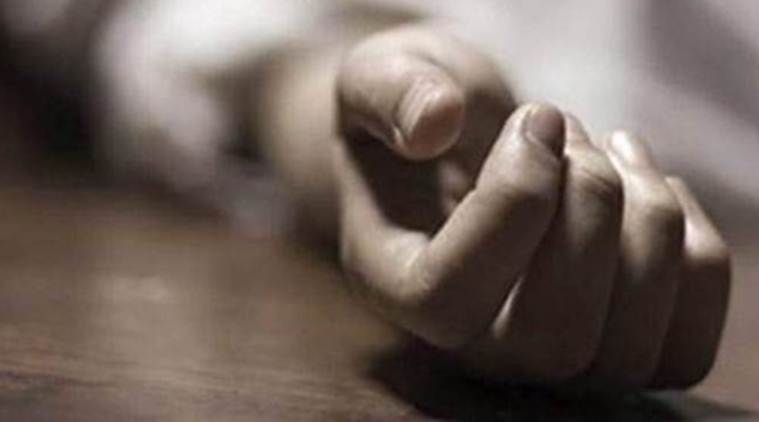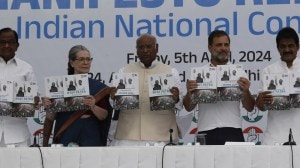- India
- International
Japanese Encephalitis deaths suspected in parts of Vidarbha, NIV to test samples
Official records show there are 15 confirmed cases of JE in Chandrapur, Gadchiroli and Wardha.
 Of the seven deaths, six were minors aged less than 15 years while one was an adult from Chandrapur’s Sanjay Gandhi Ward. (Representational Image)
Of the seven deaths, six were minors aged less than 15 years while one was an adult from Chandrapur’s Sanjay Gandhi Ward. (Representational Image)
The Maharashtra government is inquiring into a sporadic outbreak of Japanese Encephalitis (JE) in parts of Vidarbha, where at least seven people are suspected to have died from the viral infection. Health officials claim the samples will be retested by the National Institute of Virology (NIV) to confirm whether JE was responsible for these deaths.
Official records show there are 15 confirmed cases of JE in Chandrapur, Gadchiroli and Wardha. Information collected from the districts, however, shows a higher record — local district officials claim there are 14 JE cases in Gadchiroli, three in Wardha and 26 positive cases in Chandrapur.
Of the seven deaths, six were minors aged less than 15 years while one was an adult from Chandrapur’s Sanjay Gandhi Ward. “In Chandrapur, the outbreak was reported in 11 villages. In nine villages, we have been able to bring the situation under control,” said Dr Raj Gehlot, district health officer. In Chandrapur, five people are suspected to have died from JE between June and July, three from villages and two from urban areas, indicating the sporadic spread of the virus.
In Gadchiroli, two deaths were reported from the northern and southern regions of the tribal district. A one-year-old boy died in Aheri taluka (south) in May and a seven-year-old girl died in Kurkheda taluka (north) in June. “The cases are sporadic. There is no pattern to suggest the virus is in circulation in a limited area,” said Dr Shashikant Shambharkar, district health officer in Gadchiroli. A team from NIV visited the region and an awareness programme has been undertaken to quickly diagnose and treat the viral infection.
JE is spread by the culex mosquito, which breeds in dirty water. In advanced cases, the disease affects the brain and causes convulsions and high fever. According to Dr Ajay Dawale, district health officer in Wardha, the three JE cases since June in Wardha have been confirmed by ELISA (enzyme linked immunosorbent assay) test. “A confirmatory NIV testing remains pending,” he said.

The public health department has also found 64 acute encephalitis syndrome (AES) cases from the same region.
AES cases saw a spike in Bihar this year with over 150 children reported dead, the most cases being in Muzaffarpur. In Maharashtra, AES cases have increased from one in 2017 to 47 in 2018 and 64 so far in 2019. While in Bihar, a combination of malnutrition in children, the climate and toxins in unripe litchis contributed to AES cases, in Maharashtra, experts believe regions with rice cultivation will report the higher cases.
AES affects the central nervous system, mostly in children and young adults. It starts with high fever, then hampers neurological functions, causing mental disorientation, seizure, confusion, delirium and coma. The syndrome is very complex and can be caused by virus, bacteria, fungi and a range of agents. JE virus is the most common cause of AES in India.
“Like Bihar, we are not seeing only malnourished children get infected by JE,” said Dr Pradeep Awate, state epidemiologist.
Dr Mahendra Jagtap, from the state epidemiology department, said the JE virus has been in circulation in parts of Maharashtra and the weather is conducive for mosquitoes to multiply in present weather. “Since it’s a mosquito-borne infection, cases are higher during monsoons here,” he said.
Local officials claimed the cases are much higher in paddy field, where stagnating water provides breeding ground for mosquitoes. “A lot of cases are without symptoms. Our surveillance team has been screening patients and sending samples to NIV for confirmation. It is possible there may be false positive cases, so we are waiting for NIV tests to confirm deaths,” added Jagtap.
What has intrigued doctors is that both children who are suspected to have died of JE in Gadchiroli were given a JE vaccination. District officials said it is possible the children were infected despite the vaccine or the virus has become more virulent. “Vaccine does not have 100 per cent efficacy. It is also possible the initial test results came false positive. It is too early to comment,” said a district health officer.
In Chandrapur, of the 98 samples sent to Nagpur for testing, 26 came positive for JE. The phase-wise JE vaccination drive is yet to cover Chandrapur and Wardha. It has so far been implemented in nine districts in Maharashtra.
“All measures for prevention and treatment are in place. The state government is monitoring each monsoon-related ailment, and we have adequately stocked our primary health centres with medicines,” said Maharashtra Health Minister Eknath Shinde.
Apr 25: Latest News
- 01
- 02
- 03
- 04
- 05








































